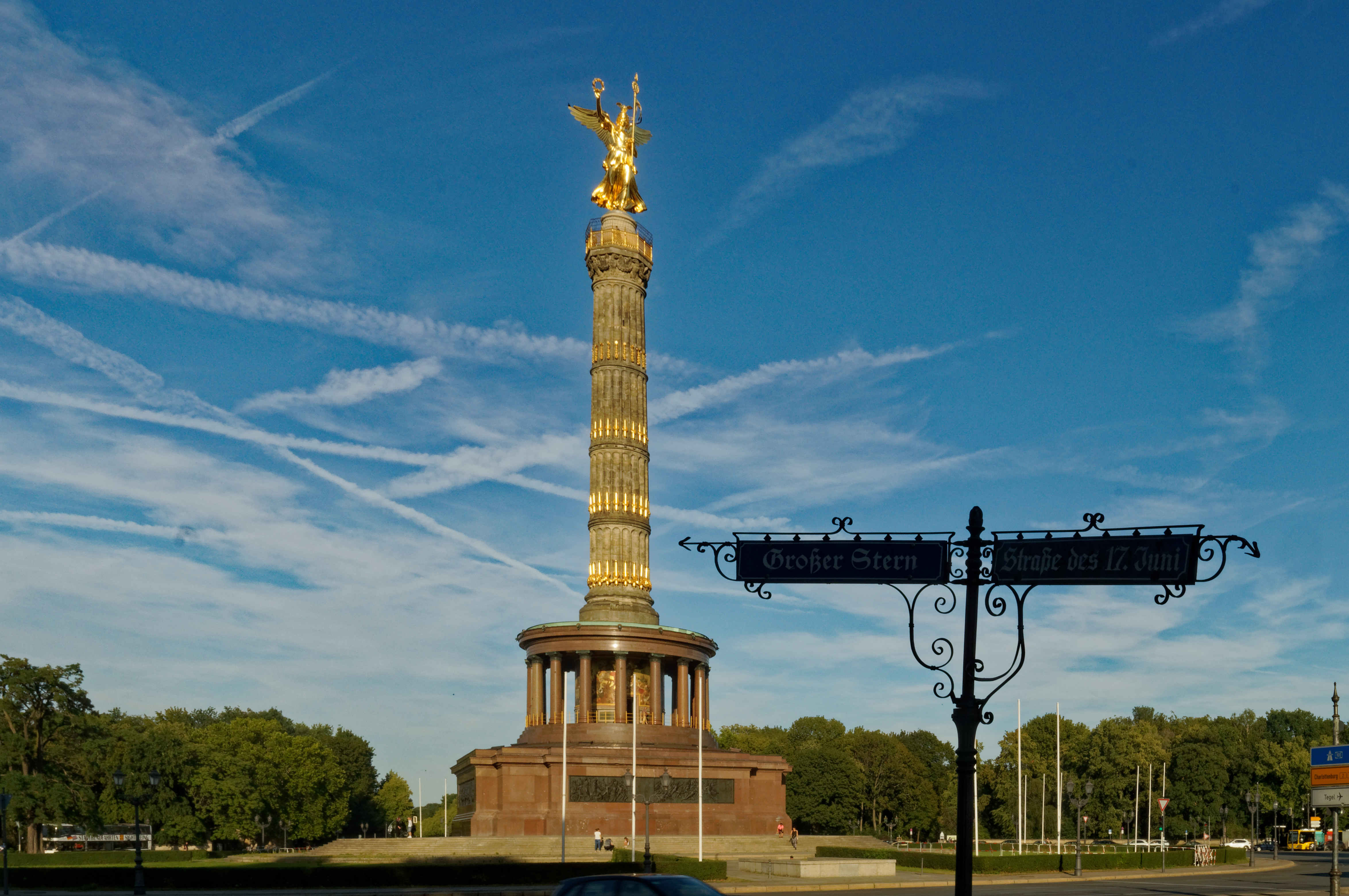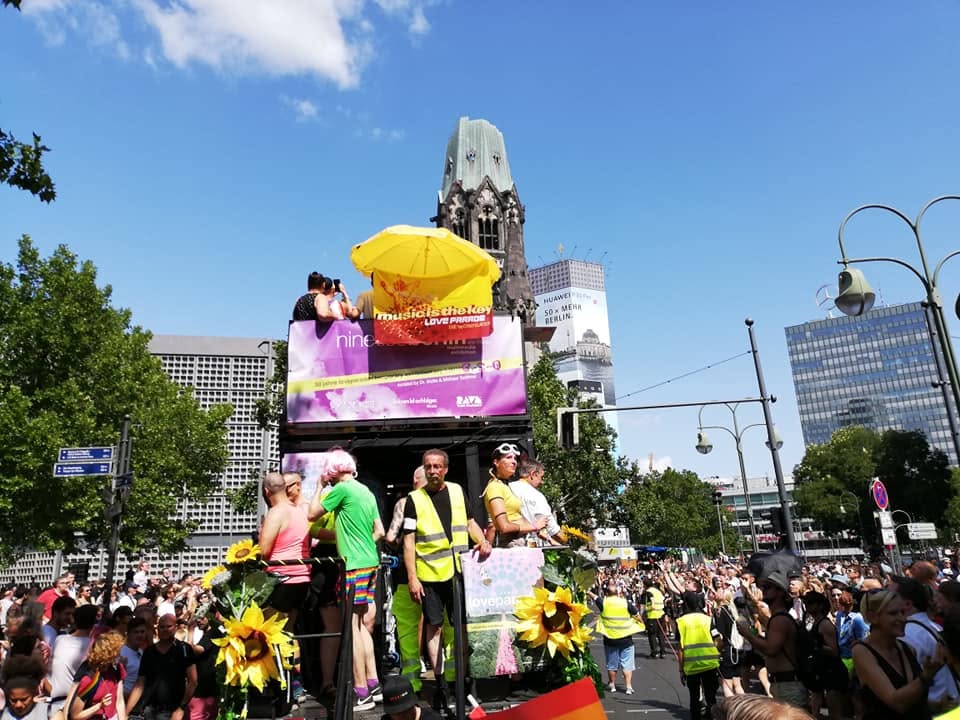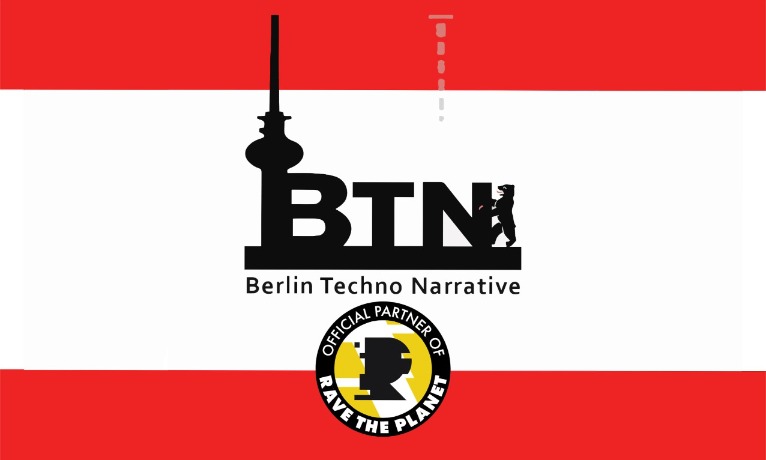Love Parade
Love Parade:
A Sonic Revolution in the Heart of Berlin
July 1st, 1989, Berlin – 4:00 PM. On the north side of Wittenbergplatz, three small vans start blasting acid house into the street. About 150 people begin dancing along the Kurfürstendamm, under the puzzled gaze of passersby. It’s raining. The parade ends in front of the famous KaDeWe department store, and the party continues later that night at the iconic UFO club. A revolution is born.
Dreamed up by Matthias Roeingh, a.k.a. Dr. Motte, and inspired by the illegal raves in England, the Love Parade was officially declared as a political demonstration. The message was as simple as it was radical: Peace, Joy and Pancakes (Friede, Freude, Eierkuchen). A political celebration of dance, electronic music, and freedom.
From 150 Dancers to 1.5 Million Ravers:
A Global Movement (1989–1999)
From its humble beginnings in 1989 with 150 participants, the Love Parade grew to attract 500,000 people by 1995, overwhelming the Ku’damm and prompting a move to the now-iconic route along the Straße des 17. Juni, from Ernst-Reuter-Platz to the Brandenburg Gate. In 1999, the event reached its peak: 1.5 million people dancing through Berlin, with the Victory Column (Siegessäule) at the heart of the celebration.
The Love Parade had become a global cultural phenomenon, showcasing Berlin as the capital of electronic music.

Not Just a Party – A Political Statement
Far from being just a DJ parade, the Love Parade carried a clear political intention: to unite people through music, to promote peace, and to foster a culture of sharing.
From the very beginning, the slogans reflected this message: The Future is Ours (1990), Peace on Earth (1995), We Are One Family (1996), Music is the Key (1999)...
Starting in 1997, each edition ended with a closing speech by Dr. Motte, delivered in front of the Victory Column (Siegessäule). These speeches were broadcast on local radio stations (notably Radio Fritz), aired on various TV channels, and synchronized across all the parade floats.
They served as a powerful reminder of the Love Parade’s core message: bringing people together beyond all borders.
A Cultural and Economic Force
The Love Parade was also a dream machine — and a generator of souvenirs.
As early as 1991, merchandising (T-shirts, badges, CDs, pins, beer cans…) helped fund the event.
Starting in 1996, official compilations were released by Low Spirit Recordings, featuring the most iconic tracks and annual anthems.
Even the slogan itself became a product.

Compilations at the 2019 Love Parade exhibition
Behind the Scenes: A Collective Effort
Although Dr. Motte is often considered the face of the Love Parade, the event was built by a passionate collective:
-
Danielle de Picciotto, co-initiator and fashion visionary
-
Westbam, Kid Paul, and Jonzon, who recorded the first mix tapes
-
Sandra Molzahn and William Röttger, producers and label founders
-
Ralf Regitz, co-director of Planetcom and E-Werk
-
Jürgen Laarmann, editor of Frontpage and co-creator of the logo
From the early flyers to the massive float logistics, these unsung heroes shaped the Parade’s success.
A Turning Point in the 2000s:
From Utopia to Decline
In 2001, the Federal Constitutional Court ruled that the Love Parade was no longer a political demonstration but a commercial event. This had major consequences: organizers now had to pay for cleanup, police, and infrastructure. Financial pressure increased, and many labels withdrew.
In 2003, fences were erected to protect the Tiergarten’s greenery, frustrating ravers. Critics decried the growing commercialization. After two cancelled editions in 2004 and 2005, the event returned in 2006 under the slogan “Love is Back”, but this time with McFit as the main sponsor — a sign of how far things had shifted.
Even Dr. Motte distanced himself, preferring to speak at the counter-event, the Fuckparade.
A Techno Heritage Worth Preserving
The Love Parade may have stopped, but its legacy lives on. It laid the groundwork for the Berlin techno identity, influencing generations of DJs, clubbers, and activists.
The two historical routes — from Wittenbergplatz to Ku’damm (1989–1995) and from Ernst-Reuter-Platz to Brandenburg Gate (1996–2006) — are now symbolic paths through the city’s techno history.
 Float Friede,Freude,Eierkuchen CSD 2019 in front of the
Float Friede,Freude,Eierkuchen CSD 2019 in front of the
the Kaiser-Wilhelm-Gedächtniskirche on the Love Parade route from 1989 to 1995
Did you like this article? Then you're going to love going further...
Our guide traces its evolution year by year, and takes you on a discovery of the key venues on Berlin's techno scene.
Guide to Berlin's historic Techno venues:
(inviting you to follow the old Parade routes, explore clubs and mythical squares, and experience Berlin in a different way)
https://www.amazon.co.uk/dp/B0F92J44Z7














